Rasht Grand Bazaar | A Real Bazaar Experience
Rasht Grand Bazaar, located in the heart of Gilan Province’s capital, is an authentic cultural and commercial hub that reflects the region’s rich history and vibrant lifestyle.
Covering 24 hectares, this bustling market consists of various sections, including 14 caravanserais and numerous traditional arches (taqis), making it a key part of the city’s heritage. Built during the Qajar and early Pahlavi eras, the bazaar has long served as a vital trade center.
Visitors can explore its diverse offerings, from fresh local produce like fish and vegetables to handmade crafts and Gilan’s famous delicacies. Rasht Grand Bazaar is more than just a shopping destination—it's a fascinating journey through time, where tradition meets modern life.
Historical Background of Rasht Bazaar
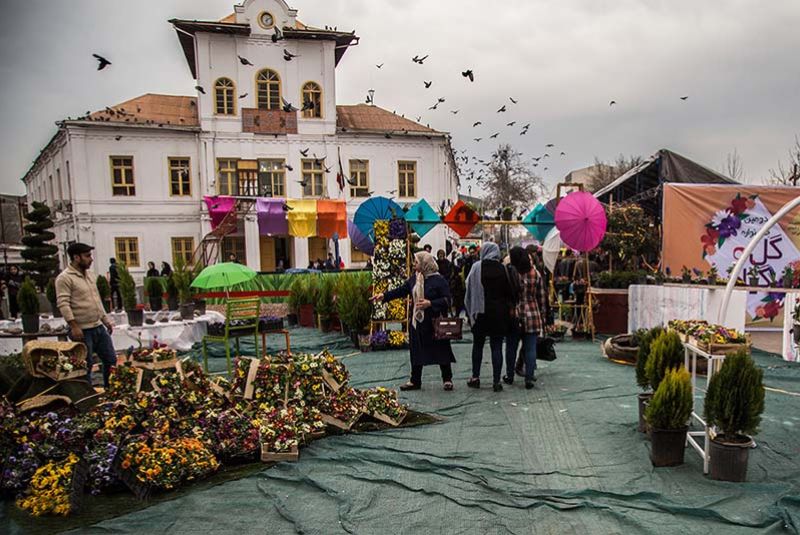
The Rasht Grand Bazaar has deep historical roots, serving as the economic and cultural heart of Rasht for centuries. Its origins trace back to the early days of the city’s establishment, where it functioned as a central hub for traders and merchants. Over time, as Rasht grew into a key urban center in the Caspian region, the bazaar evolved into an indispensable part of the city's social and commercial landscape. The construction and expansion of the bazaar accelerated during the Qajar period when its interconnected caravanserais were built to accommodate the growing volume of trade.
In the early Pahlavi period, the bazaar underwent further development, with new sections and modern facilities being added to meet the needs of an expanding economy. These additions, including several caravanserais and taqis, reflected the shift toward modern infrastructure while retaining the traditional essence of Iranian bazaar architecture.
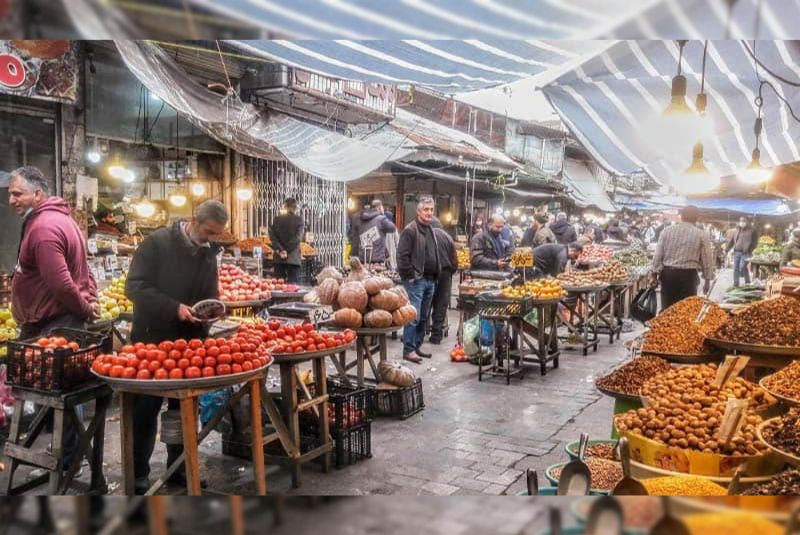
Throughout its history, Rasht Grand Bazaar has played a vital role in local and regional trade. It became a key point of exchange for goods like silk, rice, fish, and textiles, connecting northern Iran with neighboring regions and international markets. Its significance extends beyond commerce, as the bazaar remains a place where culture, tradition, and community converge, making it a cornerstone of Rasht’s identity. Today, it continues to thrive as both a historic monument and a bustling marketplace, attracting visitors and locals alike.
Architectural Layout of Rasht Bazaar
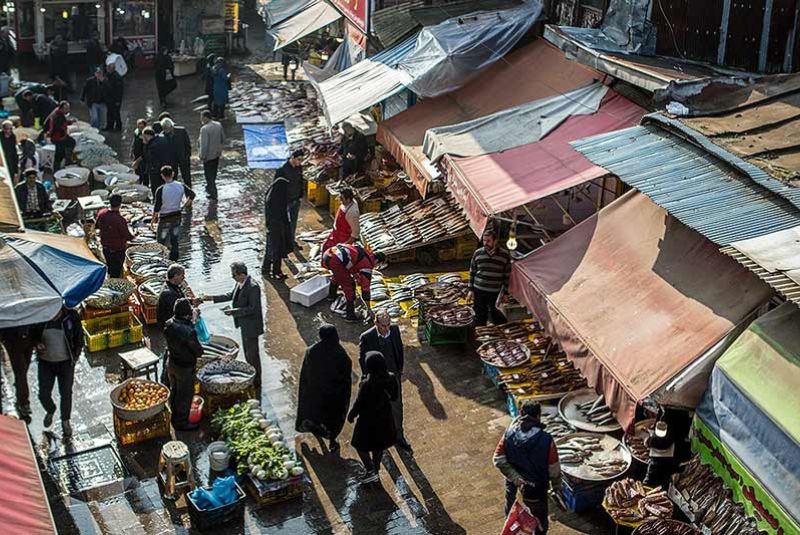
The Rasht Grand Bazaar spans an impressive 24 hectares, making it one of the largest and most intricate marketplaces in northern Iran. Its vast expanse is composed of interconnected caravanserais and taqis, each playing a distinct role in the bazaar’s bustling daily life. The maze-like design of these structures is a defining feature, with narrow passageways weaving through arches, shops, and open spaces, creating a dynamic flow of activity.
There are 14 caravanserais within the bazaar, each built during different periods, primarily in the Qajar and early Pahlavi eras. These caravanserais served as trading posts and storage facilities for merchants traveling through Rasht, particularly during its height as a center of regional commerce. Each caravanserai is designed with large courtyards, surrounded by small shops and rooms where goods were once stored. Over time, these structures have evolved to accommodate modern trade, but their historical architecture remains largely intact.
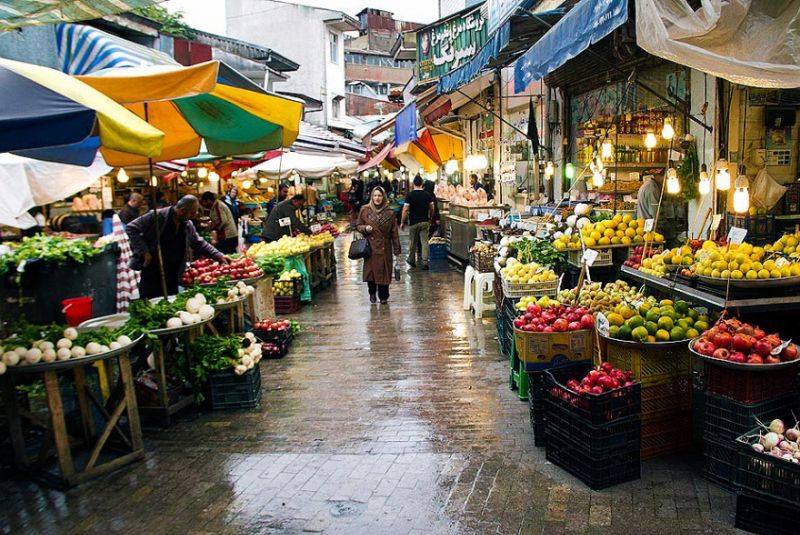
The layout of Rasht Grand Bazaar is characterized by the presence of arches and vaulted passageways, providing shade and protection from the weather while maintaining an inviting open-air atmosphere. The grand arches, known locally as taqis, connect various parts of the bazaar, including the larger caravanserais, smaller shops, and specialized rows for traders selling goods like textiles, spices, fish, and handicrafts. This complex yet organized structure allows visitors to easily navigate between different sections of the market while preserving the rich historical and cultural charm that defines Rasht’s largest marketplace.
Notable Sections of Rasht Bazaar
The Big Arch (Taghi Bozorg)
The Big Arch, also known as Taghi Bozorg, is one of the most significant sections of Rasht Grand Bazaar. Constructed in 1321 AH (1903), it is an architectural marvel, characterized by its towering arches and sturdy brickwork. Strategically located in the heart of the bazaar, it houses a range of key shops, from gold sellers (or goldsmiths) to traditional textile merchants. The Big Arch is connected to other essential parts of the bazaar, including Saray-e Qeysarieh Fakhr on the west side and plastic sellers’ rows to the east. This area serves as a central thoroughfare, bustling with vendors and customers, making it a prominent spot for both shopping and soaking in the lively atmosphere.
The Small Arch (Taghi Kochak)
Taghi Kochak, or the Small Arch, is another vital section located to the north of the bazaar, adjacent to the Haj Mojtahed Mosque. While smaller in scale, it plays a crucial role in connecting various caravanserais, including the Big Arch and Malek Caravanserai, through a network of southern and eastern corridors. Its intricate design and close proximity to other key areas of the market make it a favorite for those looking to explore the interconnected pathways of Rasht Grand Bazaar. The Small Arch leads directly to the Haj Mojtahed Mosque, offering both spiritual and commercial experiences in a single visit.
Taqhi Saadat
A historical gem dating back to the Qajar period, Taqhi Saadat was once a bustling commercial hub at the heart of Rasht’s marketplace. Positioned near the central Maidan Bozorg (Big Square), this arch served as a crucial intersection for merchants and traders. It was one of the most important centers for commerce in the city, bringing together goods from across the region. Today, its architectural beauty and historical significance continue to draw visitors, allowing them to step back into the vibrant trading culture of the past.
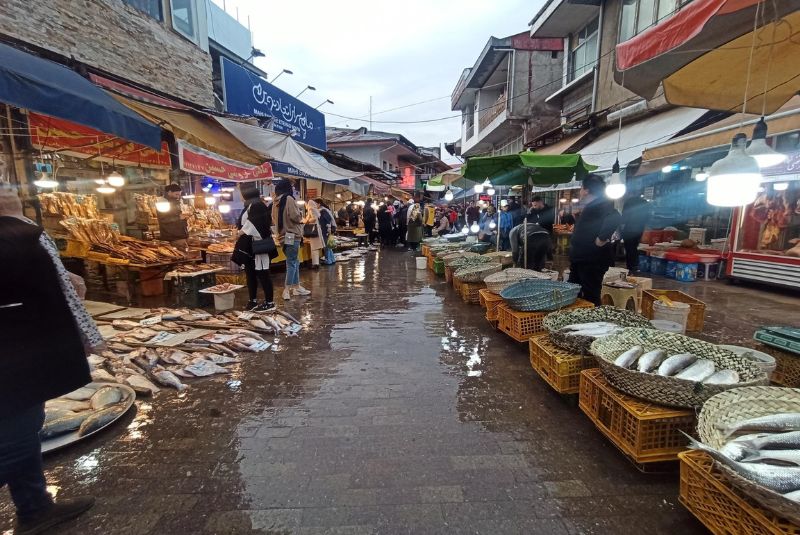
Mohtasham Caravanserai
Built in 1921, the Mohtasham Caravanserai stands as a historical monument near the Golshan Caravanserai, on the northwest side of the bazaar. It was once an essential part of Rasht’s commercial scene, contributing to the city’s prominence as a regional trade center. The caravanserai is flanked by Attaran Bazaar to its west, adding to its strategic location within the market. While its primary function as a commercial center has shifted over time, Mohtasham Caravanserai still stands as a testament to the rich trading history of Rasht Grand Bazaar.
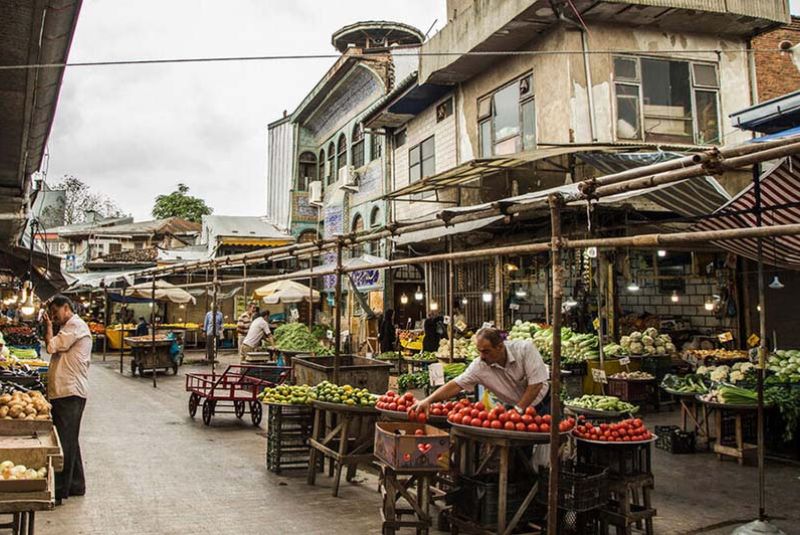
Chinichian Caravanserai
The Chinichian Caravanserai was constructed in 1929 by the Chinichian brothers and has since become one of the most important spots for merchants in Rasht. Located in the northwest corner of the bazaar, near Chahar Souq, it is adjacent to Haji Hassan Khan Sarai to the east and Saadat Sarai to the west. This caravanserai was built during a period of great economic activity in Rasht, serving merchants who traded a variety of goods. It remains a key location for exploring the interconnected network of Rasht’s historic marketplace.
Malek Caravanserai
A significant structure from the Qajar era, Malek Caravanserai is located within the inner market area of Rasht Grand Bazaar. During its peak, this caravanserai played a pivotal role in Rasht’s trade with Russia, particularly for exporting rice and silk to Kashan and Yazd. The intricate design and historic atmosphere of Malek Caravanserai make it a fascinating spot for visitors who want to delve into the commercial history of the region. Though its function has evolved over time, it continues to be an important landmark within the bazaar, reflecting the bustling trade routes that once defined Rasht’s economy.
Market Goods of Rasht Bazaar
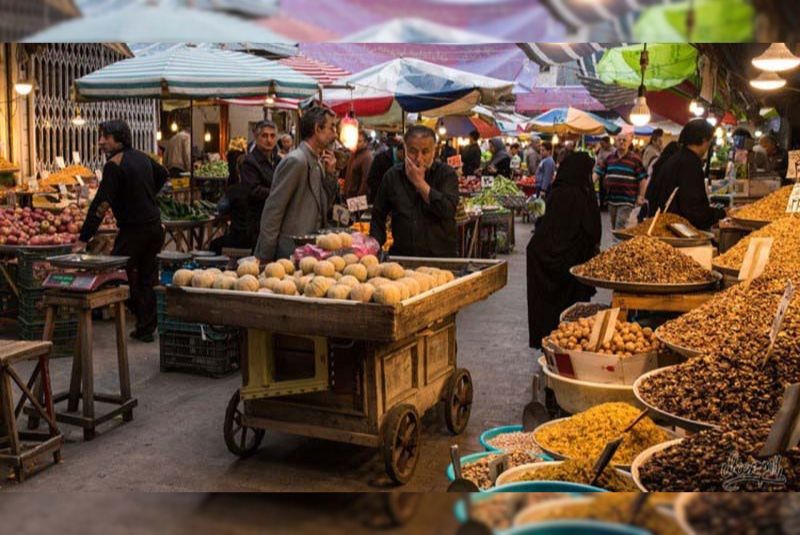
Rasht Grand Bazaar is a vibrant marketplace offering a wide range of products that reflect the rich agricultural and cultural heritage of the region. The market is renowned for its abundance of local foods, fresh produce, and artisanal goods. Among the most popular items are freshly caught fish from the Caspian Sea, which are a staple for many locals and visitors. In addition to seafood, the bazaar is filled with vendors selling fresh vegetables, herbs, and fruits, many of which are grown in the fertile fields of Gilan, along with a wide range of pickles and the famous Iranian caviar.
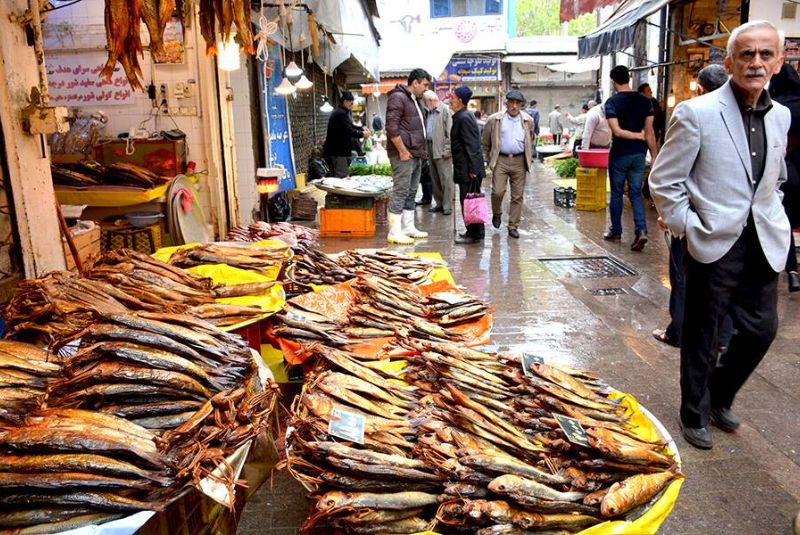
One of the unique offerings of Rasht Bazaar is its variety of olives, which come in different flavors and preparations. These are often paired with local spices that can also be found in abundance throughout the market. For those with a sweet tooth, traditional delicacies like Foman cookies and Khoshar noodles offer a taste of the region’s culinary history. These local treats are not only delicious but also hold cultural significance, as they have been made and shared in Gilan for generations.

Beyond edibles, the bazaar is also known for handicrafts, with stalls selling traditional items like Hasir (woven products from reeds) and woolen knitwear. These authentic, handmade items reflect the skills and traditions passed down through generations in Gilan province. These handicrafts, along with a variety of pottery, metalwork, and other handmade items, make the bazaar a perfect place for discovering authentic souvenirs. Whether you’re shopping for fresh produce, local delicacies, or unique handicrafts, Rasht Grand Bazaar offers an exciting and diverse marketplace experience that showcases the best of Gilan’s culture and commerce.
Rasht Grand Bazaar Location and Visiting Information
Location: Situated in Shahrdari Square, Imam Khomeini Street, Rasht.
Access: Easily reachable via private car or taxi.
Operational Hours: Open from 8 am to 8-10 pm, with some shops operating until midnight; hours may vary on Fridays.
Navigational Tips:
- Expect heavy crowds, especially during holidays and weekends.
- Arrive early to explore before peak hours.
- Be prepared for narrow passageways and busy sections; moving with patience is essential.
- Keep valuables secure and stay aware of your surroundings while navigating the bustling bazaar.
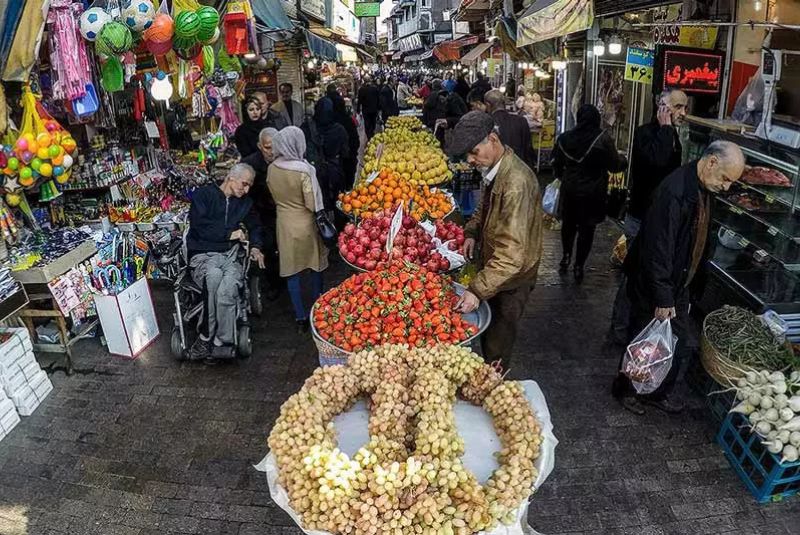
Finally!
Rasht Grand Bazaar is more than just a shopping destination; it is a vibrant cultural hub that encapsulates the essence of Gilan's heritage. With its rich history, stunning architecture, and diverse offerings, the bazaar provides an immersive experience for visitors. From the bustling caravanserais to the aroma of local delicacies, every corner invites exploration and discovery. Whether you're searching for fresh produce, unique handicrafts, or simply soaking in the atmosphere, the bazaar is a testament to the region's longstanding trading traditions. Remember to plan your visit wisely, as navigating the busy market can be a delightful challenge. Embrace the lively ambiance, respect local customs, and enjoy the authentic experience that Rasht Grand Bazaar has to offer.
Share your story!
Comment below and let us know about your Experience.
Your story inspires others!


Comment
Leave a Comment